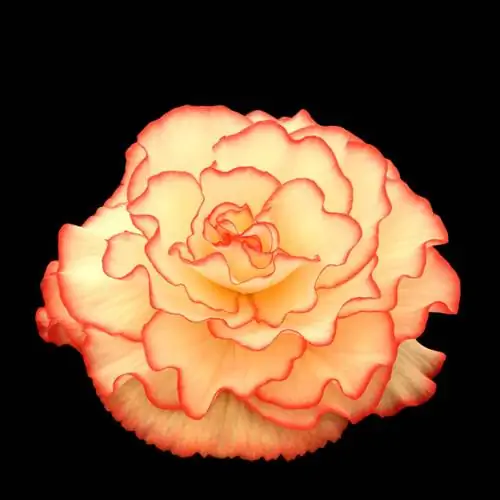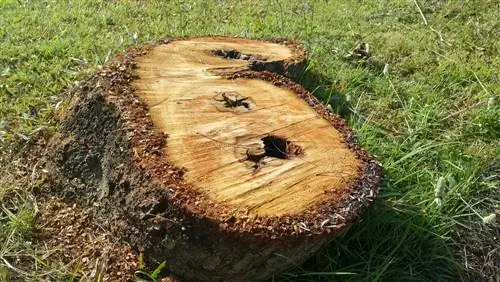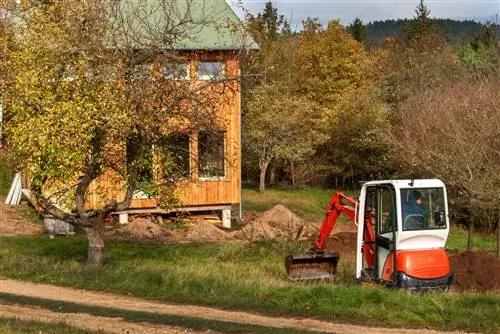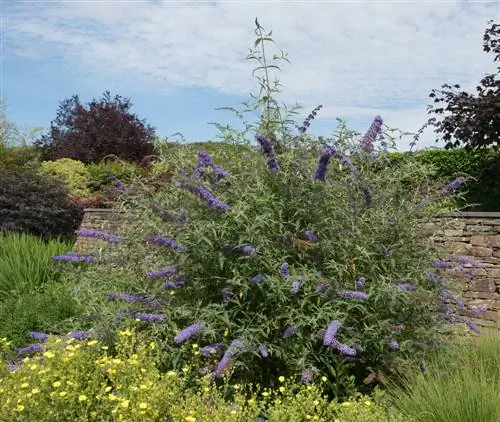- Author admin [email protected].
- Public 2023-12-25 17:45.
- Last modified 2025-06-01 06:02.
If you want to enjoy the lush abundance of flowers from the permanent bloomers as early as possible, you should plant begonias at the right time. Whether scented begonias in the room, tuberous begonias on the balcony or ice begonias in the garden - there are over 900 species worldwide that delight with their abundance of flowers.

When is the optimal planting time for begonias?
Begonias should be brought out of hibernation in February to March and brought forward in order to bloom profusely from May. The best time to plant outdoors is from mid-May as they are sensitive to frost. Partially shaded to shady locations with nutrient-rich, moist soil are ideal.
The most popular begonia varieties
- Begonia-Semperflorens hybrid or ice begonias
- Elatior begonias
- Begonia-Tuberhybrida or tuberous begonias
When can begonias be taken out of hibernation?
February to March is the ideal time to awaken the tubers from hibernation. To do this, plant the tubers in pots with the dent facing upwards. The shoots will later form from the dent. Anyone who prefers begonias on the windowsill from February onwards will harvest an abundance of flowers from May onwards.
What are the optimal conditions for planting begonias yourself?
Planting begonias yourself takes little work and is usually successful straight away. Begonias prefer a cooler, partially shaded to shady location. They react to direct sunlight or bright midday sun with brown leaves and flowers. However, they feel comfortable in moist, nutrient-rich soil.
When is the best time to plant begonias?
The best planting time for frost-sensitive outdoor begonias is from mid-May. Depending on the variety, begonias need a distance of around 20 cm. When planting begonias, only cover the tubers with a thin layer of soil.
Lots of flowers with little care in the garden
In principle, it is relatively easy to care for begonias. If you take these two points to heart, they will thrive.
- Adequate irrigation without waterlogging
- Long-term fertilizer or weekly fertilizer applications
So prevent water from congesting in the bed, planter or saucer. And only water so that the soil remains moist. Don't forget to fertilize! Adding liquid fertilizer (€18.00 on Amazon) to the irrigation water at weekly intervals is the simplest solution.
For a colorful eye-catcher on the balcony
The same rules apply to planting begonias on the balcony as in the garden. The sunny south-facing balcony is extremely unsuitable. Begonias find the optimal place on the partially shaded north, west or east side. It is also particularly important for begonias in pots, tubs or boxes that no water accumulates. It is recommended to mix the plant substrate with approx. 40% sand. Too much water seeps through the permeable soil more quickly. There should also be drainage holes in the bottom of the planters.
Begonias - poisonous or beneficial?
Although most begonia species are not poisonous, these three are classified as poisonous.
- Begonia gracilis
- Begonia rex
- Begonia - Stachys betonica
The main active ingredients are calcium oxalates and oxalic acid. Poisoning in humans and animals is manifested by irritated mucous membranes, increased urine output, vomiting and diarrhea. Begonia infusion is used as a remedy for anxiety, hysteria, neuralgia and headaches.
Tips & Tricks
Do you want to pamper your begonia every now and then? Then refresh it with a lukewarm shower from the spray bottle. This drives the fresh green shoots straight into the sky or makes them meander along the ground more quickly.






